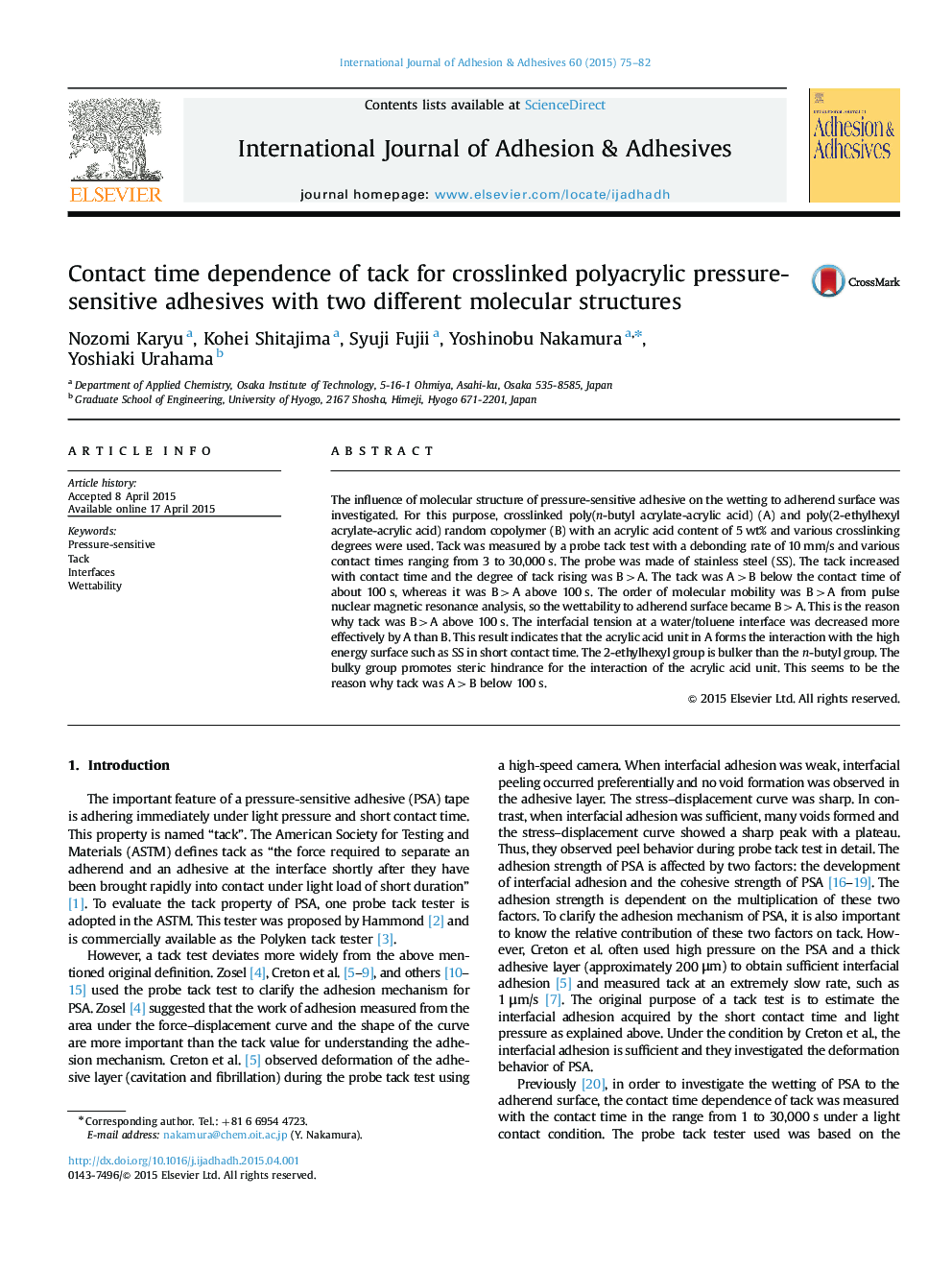| Article ID | Journal | Published Year | Pages | File Type |
|---|---|---|---|---|
| 773351 | International Journal of Adhesion and Adhesives | 2015 | 8 Pages |
The influence of molecular structure of pressure-sensitive adhesive on the wetting to adherend surface was investigated. For this purpose, crosslinked poly(n-butyl acrylate-acrylic acid) (A) and poly(2-ethylhexyl acrylate-acrylic acid) random copolymer (B) with an acrylic acid content of 5 wt% and various crosslinking degrees were used. Tack was measured by a probe tack test with a debonding rate of 10 mm/s and various contact times ranging from 3 to 30,000 s. The probe was made of stainless steel (SS). The tack increased with contact time and the degree of tack rising was B>A. The tack was A>B below the contact time of about 100 s, whereas it was B>A above 100 s. The order of molecular mobility was B>A from pulse nuclear magnetic resonance analysis, so the wettability to adherend surface became B>A. This is the reason why tack was B>A above 100 s. The interfacial tension at a water/toluene interface was decreased more effectively by A than B. This result indicates that the acrylic acid unit in A forms the interaction with the high energy surface such as SS in short contact time. The 2-ethylhexyl group is bulker than the n-butyl group. The bulky group promotes steric hindrance for the interaction of the acrylic acid unit. This seems to be the reason why tack was A>B below 100 s.
